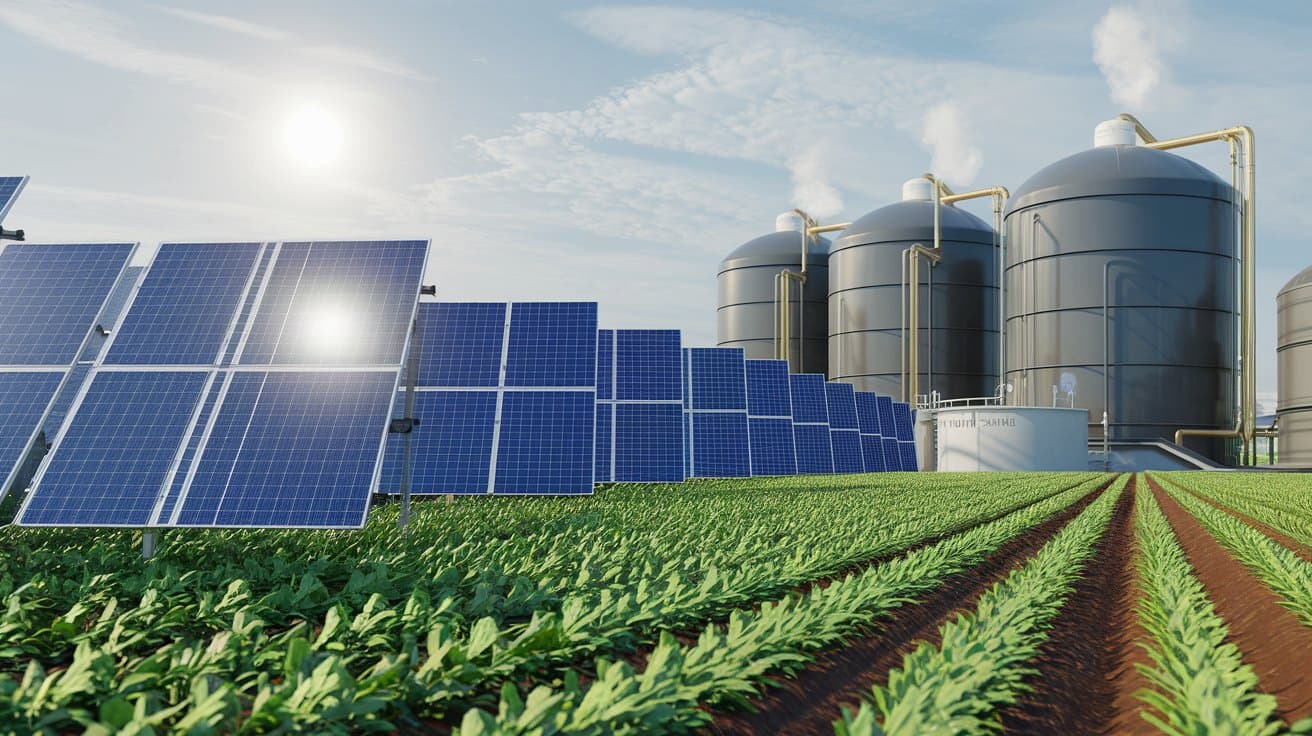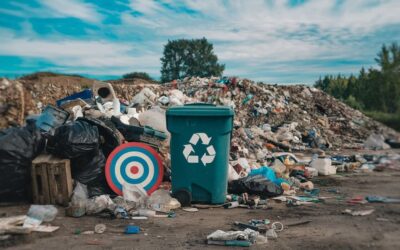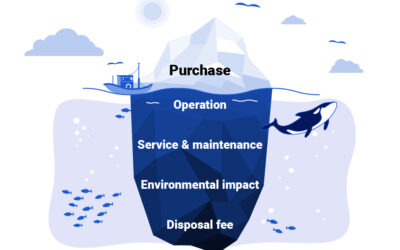In a context of growing sensitivity towards environmental sustainability and the reduction of CO2 emissions, the agricultural sector is at the center of an unprecedented energy transformation.
Among the emerging technologies that offer innovative solutions to improve energy efficiency, the combination of solar energy and biogas is proving to be one of the most promising.
But what are the advantages and opportunities of this hybrid synergy?
And what government incentives make the integration of these technologies into farms more accessible?
Why Choose a Hybrid Solution?
The combination of solar panels and biogas plants allows to maximize the resources available in an agricultural context. Solar energy, used through photovoltaic systems, is a renewable energy source that can cover the daytime energy needs of a farm, reducing the costs and emissions associated with the use of fossil fuels.
On the other hand, biogas, obtained from the anaerobic digestion of organic materials such as agricultural waste, livestock waste and biomass, offers stable and continuous energy, especially useful during the night hours or in periods of low sunlight. The combination of these two technologies, therefore, guarantees greater energy stability, reducing dependence on external sources and reducing traditional energy consumption.
Advantages of Solar Energy and Biogas in Farms
-
Maximizing resources
The synergy between photovoltaic and biogas allows you to optimally exploit the resources available on the farm. While solar panels produce clean energy, biogas plants allow you to recycle agricultural waste, reducing disposal costs and producing energy in a sustainable way. -
Reducing Environmental Impact
The combined production of renewable energy through solar and biogas contributes to significantly reducing CO2 emissions and other greenhouse gases. Biogas, in particular, allows agricultural and livestock waste to be transformed into an energy resource, while reducing the risk of soil and water pollution. This process is part of a circular economy perspective, in which waste is transformed into opportunities, promoting environmental sustainability. -
Reducing Energy Costs
Investing in a hybrid solar and biogas system can lead to a reduction in long-term operating costs. Although the initial installation costs can be high, government incentives and the ability to resell excess energy produced will offset the initial investment relatively quickly. In addition, reducing dependence on external energy suppliers helps stabilize costs and protect the company from fluctuations in energy prices. -
Space optimization
Farms often have large areas of land that are not used for agricultural production. These spaces can be used to install photovoltaic or biogas systems, without impacting crops.
What is Biogas and How Does it Work in Farms?
Biogas is one of the most versatile forms of renewable energy for the agricultural sector. It is produced through a process called anaerobic digestion, which involves the decomposition of organic waste in the absence of oxygen. Farms, with an abundance of plant and livestock residues, can take advantage of this process to produce clean energy and reduce the amount of waste to be managed.
The Anaerobic Digestion Process for Biogas Production
The anaerobic digestion process converts agricultural biomass – such as manure, crop residues and food waste – into biogas and digestate. Biogas, which is mainly composed of methane and carbon dioxide, can be used to produce electricity, heat or even biofuels. This system not only contributes to the energy self-sufficiency of the company, but also offers environmental benefits by reducing methane emissions, one of the most harmful greenhouse gases.
Use of Agricultural Residues for Biogas Production
One of the key advantages of biogas is the possibility of using agricultural waste. Residues such as manure, crop waste and plant biomass can be transformed into energy. In this way, disposal costs are reduced and the environmental impact is reduced. In addition, the digestate resulting from anaerobic digestion can be used as organic fertilizer, closing the nutrient cycle within the company.
Solar Energy in Farms: Photovoltaic Panels and their Applications
Alongside biogas, solar energy plays a key role in modern agriculture. Photovoltaic panels are a versatile and long-term solution for producing clean electricity directly from sunlight. In recent years, solar technologies have become more affordable and efficient, making this energy source particularly attractive for agriculture.
Introduction to Solar and Photovoltaic Panels
Photovoltaic panels convert sunlight into electrical energy by exploiting the photovoltaic effect. Thanks to technological innovations, it is now possible to install photovoltaic systems in farms of all sizes. They can be positioned on roofs, unused land, or in combination with agricultural activity through agrivoltaic systems.
Agrivoltaic Systems: Synergy between Photovoltaics and Agriculture
An interesting innovation is represented by agrivoltaic systems, which allow the integration of agricultural production with energy production. Through the strategic positioning of solar panels on agricultural land, it is possible to grow crops and produce energy in the same space. This synergy is particularly useful for maximizing land use without compromising agricultural productivity.
Latest Technologies and Innovations
In recent years, technological evolution has made hybrid solutions for the agricultural sector increasingly efficient and accessible.
- Bifacial photovoltaic panels : These panels are able to capture sunlight not only from the front, but also from the back, improving energy efficiency especially in environments with reflective surfaces, such as agricultural land or concrete structures.
- Transparent photovoltaic glass , without the presence of visible cells, but which can produce photovoltaic energy thanks to the properties of the material they are made of.
- Storage Systems : Solar energy storage batteries are becoming increasingly efficient and convenient. They allow you to store excess energy produced during sunny hours and use it when needed, increasing energy self-sufficiency.
- Liquefied Biogas : Biogas can be converted into biomethane and liquefied, allowing for greater efficiency in storage and transport, or used as fuel for agricultural vehicles, further reducing CO2 emissions.
Government Incentives and Tax Breaks
The adoption of hybrid technologies such as photovoltaics and biogas is supported by numerous government incentives, aimed at promoting the energy transition and sustainability in the agricultural sector.
- Conto Energia per il Biogas : This incentive rewards the production of electricity from biogas plants, guaranteeing preferential rates for energy fed into the grid. It is mainly aimed at companies that use agricultural and livestock waste.
- Superbonus 110% : Agricultural companies can also benefit from the Superbonus for the installation of photovoltaic systems, with a tax deduction of up to 110% of the expenses incurred for energy efficiency works.
- Rural Development Plans (PSR) : Each Italian region makes European funds available to encourage the adoption of renewable technologies in agricultural companies. The PSR provide non-repayable contributions or subsidized financing for the construction of photovoltaic systems, biogas and other green solutions.
Conclusions
Combining solar and biogas represents a tremendous opportunity for farms that want to improve their energy efficiency, reduce their environmental impact, and save on operating costs. Thanks to new technologies and government incentives, the adoption of hybrid systems is increasingly accessible and affordable.
Exploiting renewable resources means not only protecting the environment, but also ensuring a sustainable future for the agricultural sector, which will be able to continue to grow in harmony with nature and the planet’s energy needs.
Hydroswiss , with its experience in the design and construction of industrial recycling and renewable energy plants, is ready to support agricultural companies in the transition towards innovative and sustainable energy solutions. For more information or to request a personalized consultation, contact us today!




